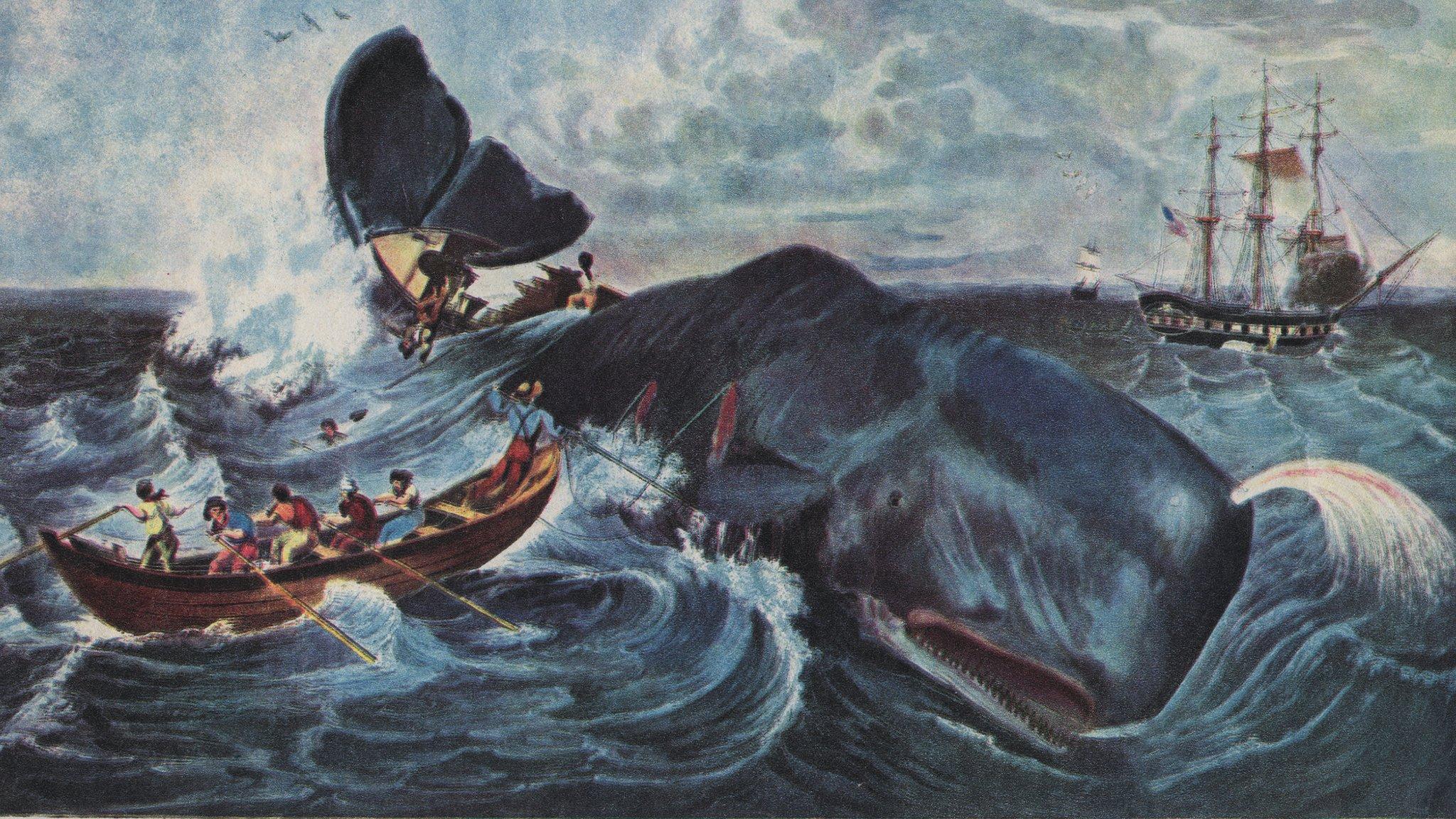Burton Constable: Plea to return 'Moby Dick' whale bones
- Published

The whale skeleton was kept in a barn at Constable Burton for many years
A stately home has appealed for people to return bones from a whale skeleton described in the book Moby Dick.
Burton Constable Hall in East Yorkshire displayed the skeleton of a male bull sperm whale since the 1830s after it washed up on the Holderness coast.
But over the years, the skeleton became neglected and many bones were taken for "souvenirs".
Now the hall wants to restore the whale "to the manner in which it would have been seen by Herman Melville".
The appeal was made as the hall prepares to mark the birth bicentenary of Melville, who wrote about the skeleton in his 1851 book.
The 58ft-long mammal washed up at Tunstall in 1825 and was dissected on the beach by Hull doctor James Alderson, who presented his findings to the Royal Cambridge Philosophical Society.
Sir Clifford Constable had the skeleton mounted in Burton Constable's parkland in the 1830s, where it was viewed by scientists, writers and tourists.

'Swing on his lower jaw'
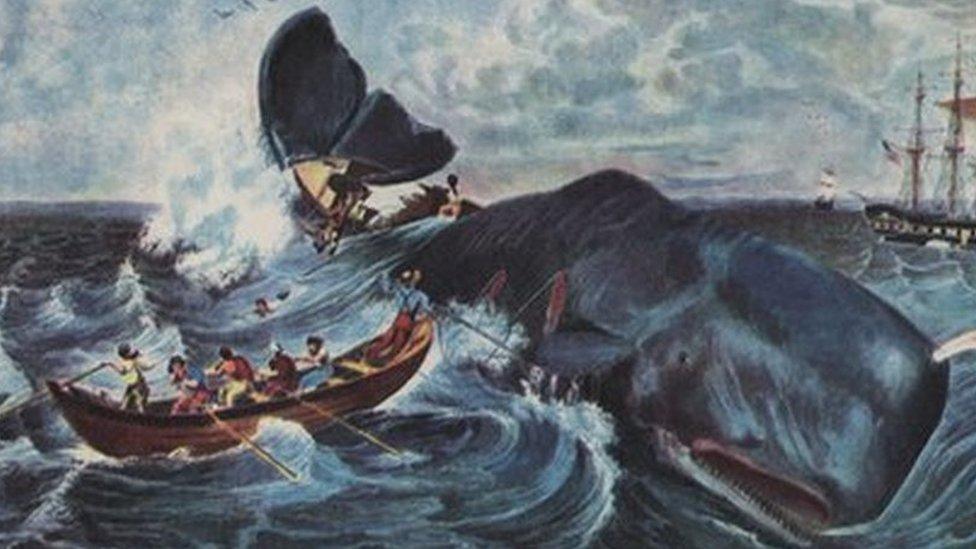
Sperm whales like Herman Melville's Moby Dick were hunted for their oil
At a place in Yorkshire, England, Burton Constable by name, a certain Sir Clifford Constable has in his possession the skeleton of a sperm whale…
Sir Clifford's whale has been articulated throughout; so that, like a great chest of drawers, you can open and shut him, in all his bony cavities - spread out his ribs like a gigantic fan - and swing all day upon his lower jaw.
From Moby Dick, by Herman Melville (1851)

Curator Philippa Wood said the whale skeleton "mouldered away in parkland" and was played on by local children.
It was rescued "in a very poor state" in the 1990s, and now the Burton Constable Foundation wants to fully restore it.
"Some parts were definitely taken over the years as souvenirs," Ms Wood said.
"We want to further conserve this historically-significant specimen for future generations".
Eleven of 44 vertebrae are missing, many of them small bones near the tail but one is "fairly large and significant". Much of the left flipper has also gone.
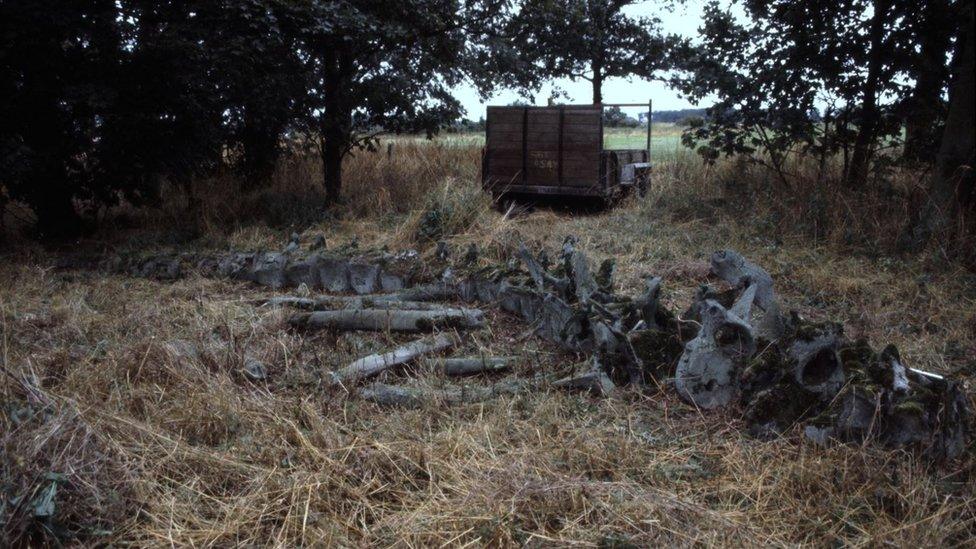
The Burton Constable whale was moved from parkland to a barn in the 1990s
Ms Wood said: "Having the original authentic bones is much preferable than having to 3D print them.
"We'd like anyone with bones in their safekeeping to return them."
She said the conservation would be time-consuming and most bones would need to be taken for cleaning and repairs.
"If the bones allow we'd like to have it mounted with metal armature in keeping with how it would have originally been displayed in the mid-19th-century," she added.
She said the skeleton was "very significant and poignant", historically, scientifically and socially.
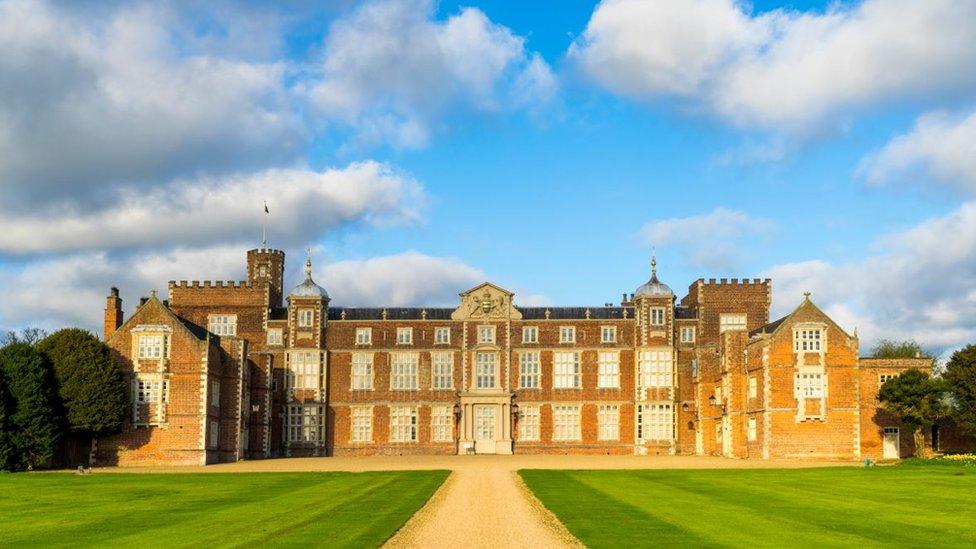
Burton Constable is an Elizabethan mansion in East Yorkshire

Follow BBC East Yorkshire and Lincolnshire on Facebook, external, Twitter, external, and Instagram, external. Send your story ideas to yorkslincs.news@bbc.co.uk, external.
- Published13 July 2017
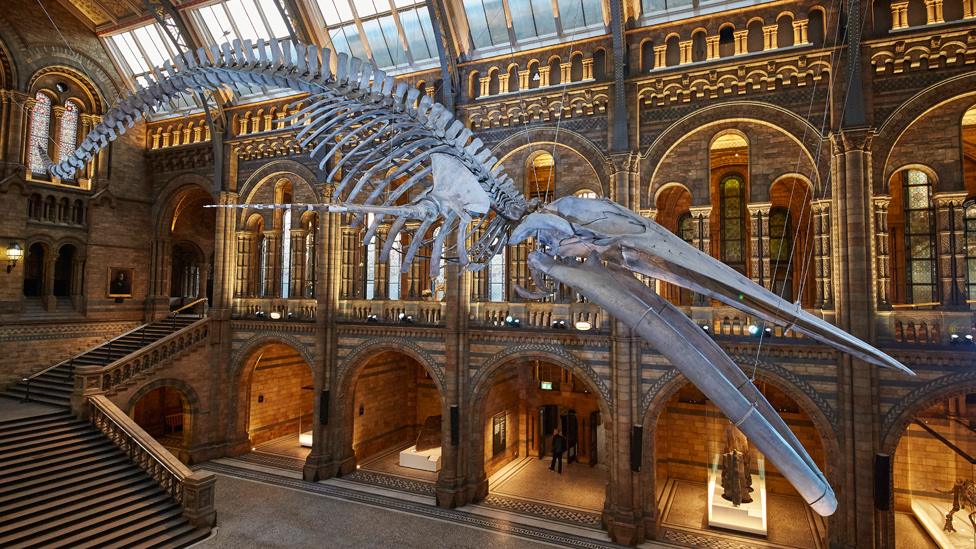
- Published9 December 2015
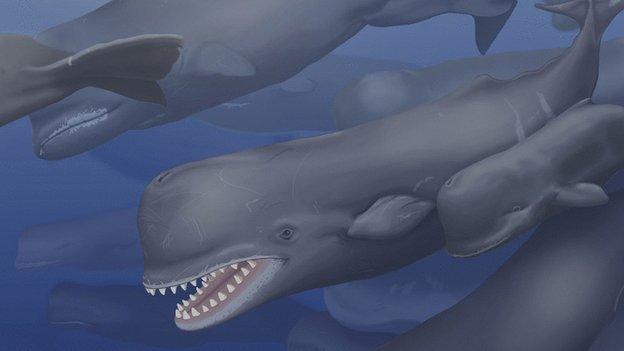
- Published4 May 2013
